Blog » Travel Guides » Ultimate Kyoto Trav...
Ultimate Kyoto Travel Guide: Top Attractions, Cultural Landmarks & Experiences
Explore Kyoto’s rich heritage with this comprehensive 2025 travel guide featuring iconic temples like Kinkaku-ji and Fushimi Inari Shrine, serene natural spots such as Arashiyama Bamboo Grove, and immersive traditional experiences including tea ceremonies and geisha district tours. Ideal for travelers seeking both cultural depth and practical tips to make the most of their visit to Japan’s ancient capital.
Key Takeaways
- Kyoto is Japan’s historic and cultural heart, featuring 17 UNESCO World Heritage sites, well-preserved temples, shrines, and traditional neighborhoods like Gion offering authentic cultural experiences.
- The best times to visit Kyoto are spring and autumn for comfortable weather and stunning natural scenery, including cherry blossoms and vibrant fall foliage.
- Kyoto’s transportation system is efficient and diverse, with trains, subways, buses, taxis, bicycles, and walking options enabling easy access to major sights and neighborhoods.
- Choosing accommodation depends on your interests, with options ranging from lively downtown districts to traditional ryokans in Gion or tranquil stays near Arashiyama’s natural scenery.
- Immerse yourself in Kyoto’s culture with activities like tea ceremonies, geisha district tours, seasonal festivals, and hands-on workshops to deepen your understanding of Japanese traditions.
- Day trips to nearby destinations like Nara, Uji, and Lake Biwa add historical, cultural, and natural variety to your Kyoto itinerary within easy travel distance.
With centuries of history and a wealth of cultural treasures, Kyoto truly is a captivating destination that embodies the heart of traditional Japan.
Whether you’re eager to visit famous temples like Kinkaku-ji and Fushimi Inari Shrine or want to soak in the peaceful vibes at spots like the Arashiyama Bamboo Grove, this Kyoto Japan travel guide has everything you need to plan a memorable trip to Japan’s ancient capital.
From hands-on cultural activities like tea ceremonies and geisha district tours to practical tips on getting around and where to stay, this guide will help make your journey smooth and deeply rewarding.
In the sections ahead, you’ll find detailed info about Kyoto’s rich history, advice on the best times to catch cherry blossoms or autumn colors, and pointers on navigating the city’s public transport without breaking the bank.
We’ll cover top sights, highlight must-visit neighborhoods, recommend authentic dining spots, and suggest day trips to nearby cultural gems to round out your adventure.
Whether history fascinates you, food excites you, or you’re after an immersive cultural experience, this guide will help you tailor a perfect Kyoto itinerary to fit your interests and timeframe.
Get ready to dive into Kyoto’s deep heritage, lively traditions, and stunning scenery, making sure your time in this incredible city is not just fun and easy but also meaningful on every level—culturally, mentally, and emotionally.
Introduction to Kyoto and Its Cultural Significance

Kyoto holds a unique spot as Japan’s cultural heart, having been the imperial capital for over a thousand years—from 794 to 1868. Founded by Emperor Kanmu, the city was thoughtfully designed following models of ancient Chinese capitals and blossomed as the center of Japan’s politics, religion, and arts.
This long imperial past shaped Kyoto into a treasure chest of traditional culture, architecture, and spiritual heritage, much of which remains intact today thanks to the city avoiding heavy wartime damage and major natural disasters that other cities faced.
Its cultural importance didn’t go unnoticed—UNESCO recognized 17 sites within Kyoto and its surrounding areas as the “Historic Monuments of Ancient Kyoto” World Heritage Site.
These include renowned Buddhist temples, Shinto shrines, and Nijo Castle, highlighting architectural styles and gardens spanning more than a thousand years. Many of these places are also designated as Japan’s National Treasures or Important Cultural Properties, reflecting their huge historical and artistic value for visitors and researchers alike.
- Geisha districts like Gion offer a rare window into Japan’s traditional performing arts and social customs, featuring authentic tea houses and beautifully preserved wooden townhouses (machiya) along charming narrow streets.
- Iconic temples such as Kinkaku-ji (Golden Pavilion), famous for its shimmering gold leaf exterior and reflective pond, and Fushimi Inari Shrine with its seemingly endless vermilion torii gate tunnels, capture Kyoto’s deep spiritual heritage and harmonious relationship with nature.
- The city’s traditional architecture goes beyond grand temples to include historic neighborhoods and merchant houses, bringing ancient Japan vividly to life for today’s visitors.
Whether you’re wandering through centuries-old temples, taking part in traditional tea ceremonies, or strolling the atmospheric streets of historic districts, Kyoto invites you to experience a living heritage where Japan’s past and cultural identity are still alive and well.
This mix of imperial legacy, religious traditions, and artistic expression makes Kyoto a one-of-a-kind spot for anyone wanting to get beyond typical tourist sights and really connect with Japanese culture.
Why Visit Kyoto?
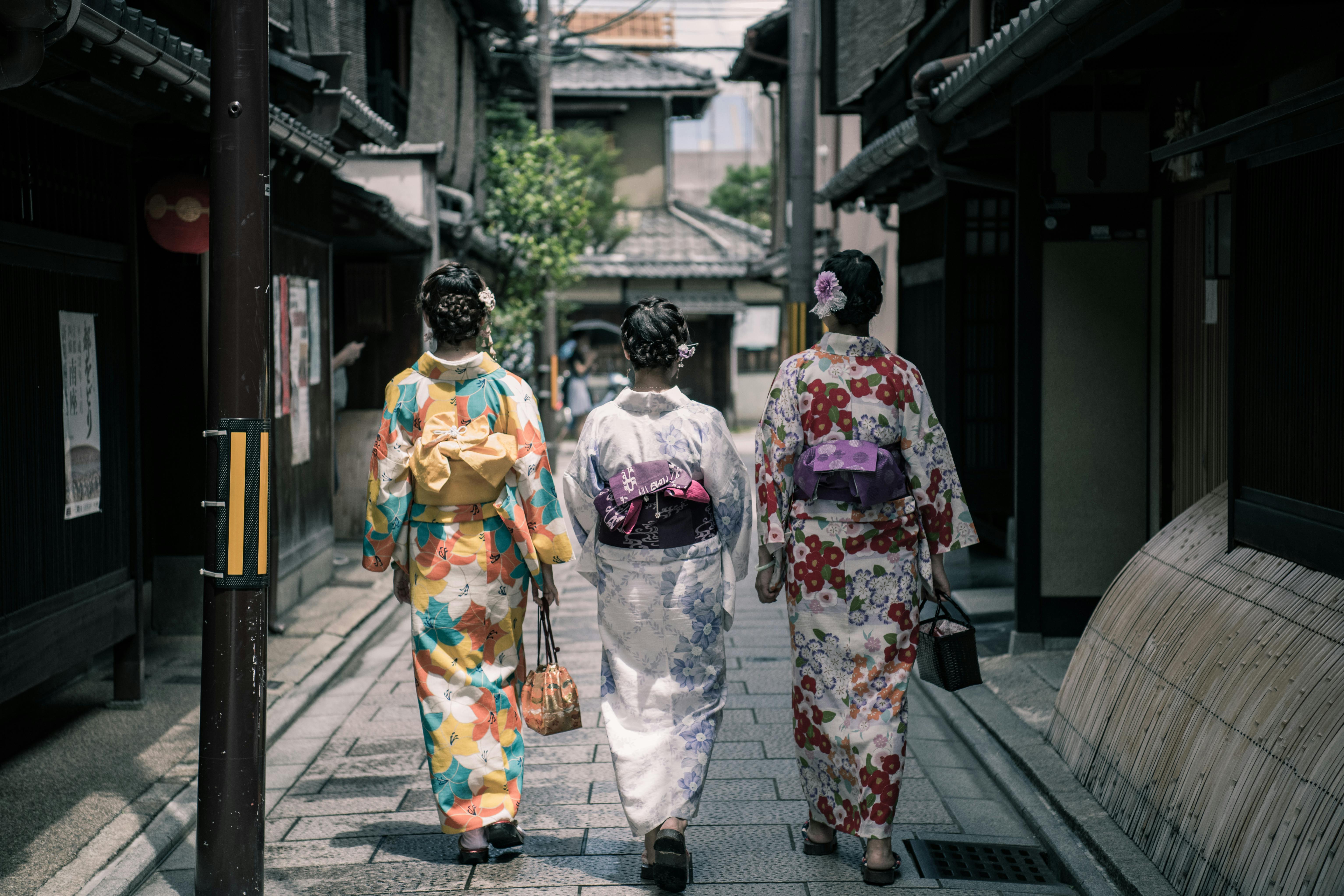
Kyoto isn’t just another city in Japan—it stands out because of its incredible mix of deep history, vibrant culture, famous attractions, and beautiful natural scenery.
As the former imperial capital, Kyoto offers a real chance to step back in time and experience Japan’s ancient traditions up close through its well-kept temples, shrines, and historic neighborhoods.
People flock to landmarks like Fushimi Inari Shrine with its endless vermilion torii gates, the dazzling Kinkaku-ji (Golden Pavilion), and the stunning views from Kiyomizu-dera Temple.
Beyond just sightseeing, Kyoto lets you dive into experiences like traditional tea ceremonies, wandering through atmospheric geisha districts, and tasting Kyoto’s refined kaiseki cuisine, which highlights seasonal and local ingredients.
- Rich Cultural Heritage: Kyoto keeps Japan’s old customs, architecture, and artistry alive in a way no modern city can. Its many UNESCO World Heritage sites give you immersive glimpses into Japan’s spiritual and imperial history.
- Natural and Seasonal Beauty: Nestled among mountains and dotted with serene gardens and bamboo groves like Arashiyama Bamboo Grove, Kyoto’s scenery changes dramatically with the seasons—especially during cherry blossom and fall foliage time.
- Authentic Traditional Experiences: You can engage with living traditions here—from dressing up in kimono to taking part in vibrant festivals such as Gion Matsuri—which add a rich cultural layer to your visit.
- Perfect for Every Traveler: Whether you’re a history buff, a foodie, a photographer, or someone seeking peace, Kyoto has something meaningful and inspiring for everyone.
Kyoto’s graceful blend of ancient temples, exquisite cuisine, breathtaking landscapes, and vibrant traditions makes it a truly unique place that embodies the very spirit of Japan.
If you’re searching for a Kyoto Japan travel guide, you’ll find a deep cultural adventure paired with modern comfort, making your stay both inspiring and easy.
Best Time to Visit Kyoto
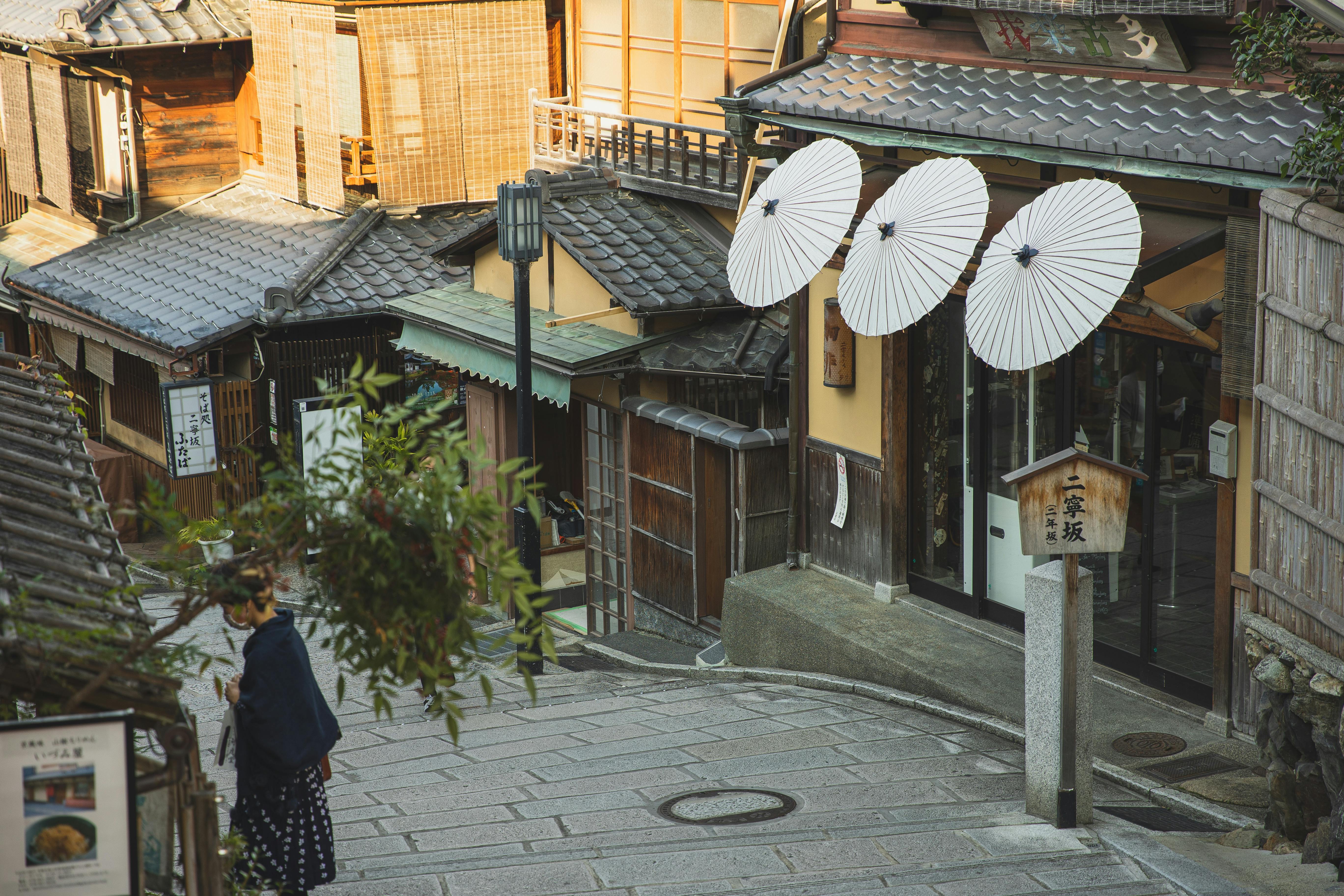
The best time to visit Kyoto is during spring (March to May) and autumn (September to November), when the weather is comfortable and the natural beauty is at its peak.
These seasons paint the city with iconic cherry blossoms in spring and vivid autumn leaves later on, creating picture-perfect scenes around temples, shrines, and gardens.
Spring is famous for cherry blossoms, usually peaking from late March to early April. During this period, Kyoto is draped in soft pink sakura blooms that beautifully frame spots like Kinkaku-ji and the Philosopher’s Path.
The temperatures are mild, averaging between 14 and 25°C (57 to 77°F), perfect for exploring outdoors, enjoying tea ceremonies, and wandering historic streets without worrying about extreme heat or cold.
- Spring (March – May): Mild weather with stunning sakura blooms that turn Kyoto’s famous temples and gardens into breathtaking landscapes, attracting locals and tourists alike.
- Autumn (September – November): Cooler, crisp air with stunning fall colors, especially in mid to late November, painting the city in rich reds and golds. Great for photography, strolls in nature, and soaking up seasonal festivals.
Autumn rivals spring in popularity thanks to its stunning colors from changing leaves. The crisp atmosphere and stunning views at places like Arashiyama Bamboo Grove and Tofuku-ji Temple create a magical vibe for visitors. Also, autumn often sees smaller crowds than cherry blossom season, particularly in early September and late November, giving a more laid-back sightseeing experience.
Summer (June to August) in Kyoto can get hot and humid, with a rainy season that peaks between mid-June and late July. Though the weather can be sticky, summer hosts lively festivals like the famous Gion Matsuri in July, offering special chances to enjoy vibrant street celebrations and traditional processions.
Winter (December to February) is colder and less crowded. While brisk, occasional snow dusting temple roofs and gardens adds a peaceful, picturesque touch. Early January brings traditional New Year celebrations, giving visitors a chance to enjoy authentic Kyoto culture in a quieter, more intimate atmosphere.
| Season | Weather | Main Attractions | Crowds |
|---|---|---|---|
| Spring (Mar-May) | Mild, pleasant | Cherry blossoms, cultural festivals | High |
| Summer (Jun-Aug) | Hot, humid, rainy season | Gion Matsuri, lush gardens | Moderate |
| Autumn (Sep-Nov) | Cool, crisp | Fall foliage, temple visits | High |
| Winter (Dec-Feb) | Cold, occasional snow | Serene temples, New Year events | Low |
Planning your Kyoto visit around these seasonal highlights lets you enjoy the city’s cultural and natural beauty at their best. For classic sightseeing paired with cultural immersion—like tea ceremonies or exploring geisha districts—spring and autumn are unbeatable choices that promise lasting memories.
How to Get to Kyoto

Getting to Kyoto is straightforward thanks to Japan’s efficient transport network, mainly through the famous Shinkansen bullet trains and nearby airports.
Kyoto Station serves as the city’s main transportation hub, linking trains and buses that get you around Kyoto and nearby places with ease.
If you’re coming from Tokyo, the fastest and most comfortable ride is the Tokaido Shinkansen, which takes about 2 to 2.5 hours from Tokyo Station straight to Kyoto Station.
Beyond convenience, you’ll get to enjoy scenic views of the Japanese countryside along the way—a great start to your trip.
- From Osaka: A rapid JR train or Shinkansen gets you there in 15 to 30 minutes. Private railways like Hankyu and Keihan also offer frequent, budget-friendly services to Kyoto Station, perfect for day trips or if you’re flying into Osaka.
- From other cities like Nagoya or Hiroshima, direct Shinkansen trains connect quickly, making intercity travel across Japan smooth.
- Airports: While Kyoto doesn’t have its own airport, two nearby airports make arriving easy:
- Osaka International Airport (Itami) mostly handles domestic flights, with limousine buses reaching Kyoto Station in about 50 minutes.
- Kansai International Airport (KIX) is the main international gateway. The JR Haruka Express train goes direct from KIX to Kyoto Station, takes your Japan Rail Pass, and is a favored option among travelers.
For an easy arrival, it’s wise to buy train or bus tickets ahead of time and double-check schedules, especially if your flight lands late. Kyoto Station is large but well-marked with English signs and helpful info desks.
Downloading a station map before you go can save you time and hassle. Once you arrive, you’ll find buses, subways, taxis, and rental bikes all ready to whisk you off to top spots like Kinkaku-ji and Fushimi Inari Shrine.
“Taking the Shinkansen from Tokyo or the Haruka Express from Kansai Airport is hands down the quickest, least stressful way to get into Kyoto.”
Travel Expert
Getting Around Kyoto: Transportation Guide

Kyoto’s public transportation network is comprehensive and well-connected, making it easy to explore the city’s many cultural landmarks. You can choose from trains, subways, buses, taxis, bicycles, or simply walk—each suited to different needs and styles of travel.
Trains are great for reaching spots both in the center and further out, like Arashiyama, Fushimi Inari Shrine, and nearby cities such as Nara.
Kyoto’s rail lines include JR, Keihan, Hankyu, and the Keifuku Randen tram, all running frequently and fast. For longer trips, the Shinkansen connects Kyoto to Tokyo, Osaka, and other big cities.
- Subways: Kyoto has two lines—Karasuma (north-south) and Tozai (east-west)—that cover the city center efficiently, letting you skip traffic delays.
- Buses: The bus network reaches many tourist spots not served by trains or subways, especially in the east and north. Though traffic and narrow streets can slow buses down, mixing bus rides with train or subway trips helps you get around smoothly.
- Taxis: Handy for door-to-door rides—great if you have luggage or travel in groups. They’re pricier but useful late at night or for quick hops.
- Bicycles and Walking: Kyoto’s mostly flat and compact city layout makes renting a bike a popular, fun way to see temples and quiet neighborhoods. Walking is best for shorter distances, especially in the historic districts, offering a close-up cultural experience.
For convenience, grab a prepaid IC card like ICOCA or Suica, which works on nearly all trains, buses, and subways. Tourists can also buy 1-day passes for unlimited subway and bus rides—perfect for hopping between spots without hassle.
Planning your routes ahead lets you mix modes for the best experience. From Kyoto Station, it’s about 40 minutes by train to Arashiyama and roughly 20 minutes by bus or subway to eastern temples like Kiyomizudera. If you have heavy bags, most hotels offer luggage delivery service, freeing you up for stress-free travel.
| Transport Type | Best For | Notes |
|---|---|---|
| Trains | Outlying & intercity travel | Fast, frequent, covers major spots |
| Subways | City center travel | Two lines, avoids traffic congestion |
| Buses | Accessing less-connected or hilly areas | Slower in traffic but widely available |
| Taxis | Convenience, groups, late night | More expensive, good for flexible schedules |
| Bicycles | Scenic local trips | Easy terrain, many rental shops |
| Walking | Short distances, historic districts | Best way to absorb local atmosphere |
By focusing on trains and subways for longer travel and using buses or bikes to explore scenic or less-connected spots, you can cover Kyoto’s spread-out attractions efficiently. A little planning goes a long way, helping you get the most out of your journey without stress.
Where to Stay in Kyoto
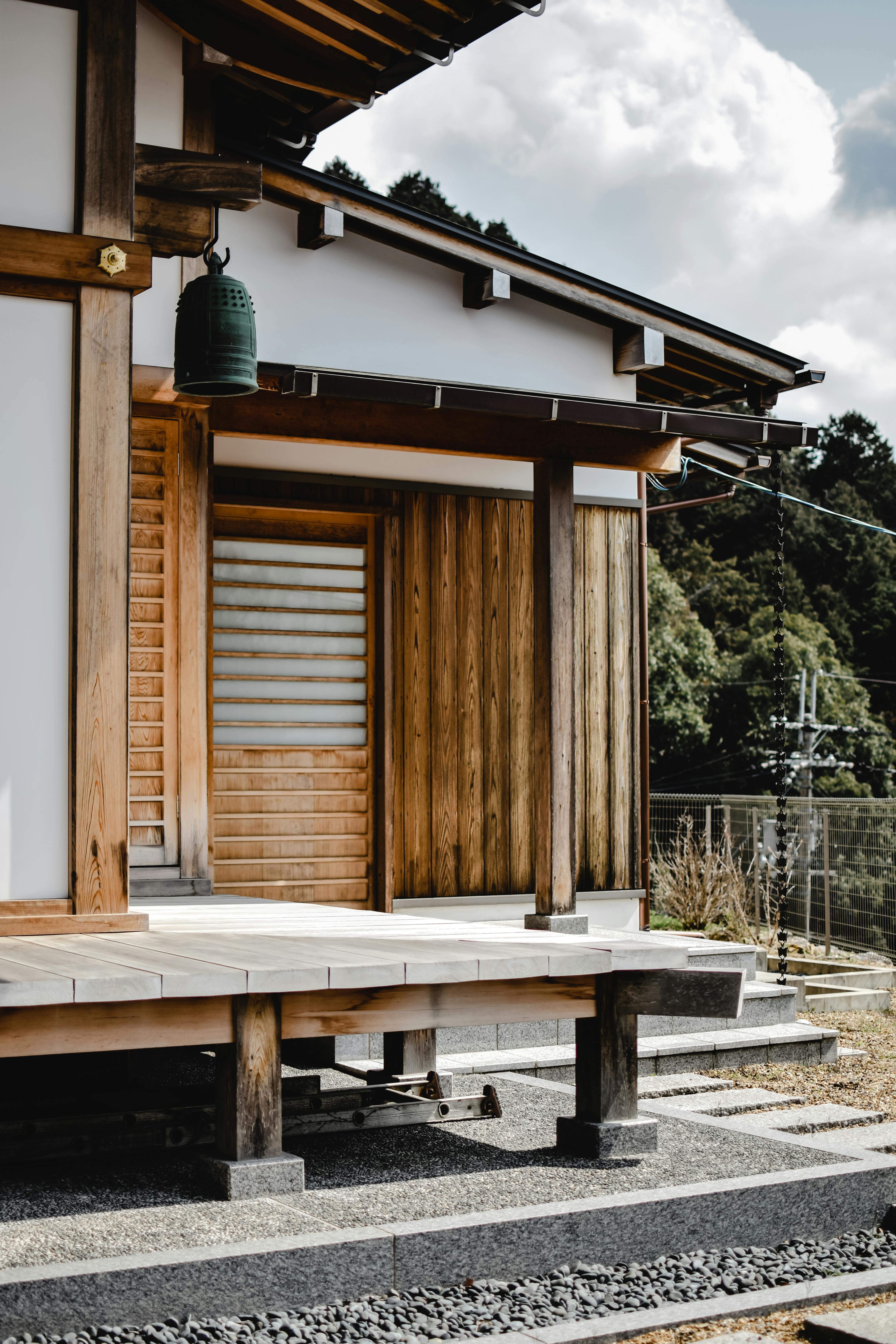
Picking your place to stay in Kyoto depends on what you want to do. Each neighborhood has its own vibe and offers easy access to different attractions.
Whether you want the buzz of downtown or the calm of traditional quarters, here are some top areas and accommodation options to help you decide:
Downtown Kyoto is great for a lively stay close to shopping, dining, and nightlife. You’ll be near Nishiki Market and Pontocho Alley. A fun mix of old-world charm and modern comforts.
Hotels range from luxury picks like the Ritz-Carlton Kyoto to budget-friendly spots like Hotel Mystays Kyoto Shijo, all with good transit links.
- Best for: Foodies, nightlife lovers, shopping fans
- Highlights: Nishiki Market, Pontocho nightlife, central location
- Sample hotels: Ritz-Carlton Kyoto, Cross Hotel Kyoto, Hotel Mystays Kyoto Shijo
Gion and Southern Higashiyama offer a more traditional feel. Staying here means wandering through Kyoto’s historic district, with cobblestone streets and cozy teahouses. It’s close to landmarks like Kiyomizu-dera and the famous geisha district. Options range from luxury ryokans like Four Seasons Kyoto to charming guesthouses like Kyoto Inn Gion The Second.
- Best for: Culture buffs, history lovers, geisha district explorers
- Highlights: Traditional architecture, Kiyomizu-dera, Yasaka Shrine
- Sample hotels: Hotel The Celestine Gion, Four Seasons Kyoto, Kyoto Granbell Hotel
If easy access to transport is your priority, Kyoto Station Area fits the bill. It puts you near Shinkansen trains, buses, and major transit points—perfect for day trips or busy itineraries. Boutique spots like Hotel Kanra Kyoto and upscale choices like Hotel Granvia Kyoto are popular here.
- Best for: Travelers with lots of luggage, day-trippers
- Highlights: Access to trains, buses, airport transfers
- Sample hotels: Hotel Kanra Kyoto, Hotel Granvia Kyoto, 22 Pieces Aparthotel
Central Kyoto, near the Imperial Palace, offers a quieter vibe with gardens and shrines that attract fewer crowds. Boutique and machiya-style hotels like Nazuna Kyoto Gosho and The Junei Hotel Kyoto Imperial Palace West provide authentic, intimate stays.
- Best for: Peaceful surroundings, cultural immersion
- Highlights: Kyoto Imperial Palace, quiet residential areas
- Sample hotels: Nazuna Kyoto Gosho, The Junei Hotel Kyoto Imperial Palace West, Ace Hotel Kyoto
For those who want to be close to nature, Arashiyama on Kyoto’s western edge is ideal. Famous for its lush bamboo groves and riverside views, it features traditional ryokans like Rangetsu Ryokan, offering a peaceful escape from the city’s buzz.
- Best for: Nature lovers, ryokan fans
- Highlights: Bamboo Grove, Tenryu-ji Temple, scenic walking paths
- Sample hotels: Rangetsu Ryokan, Arashiyama House MAMA, Mulan Hostel
Pro tip: For a truly authentic stay, consider booking a machiya townhouse—a traditional wooden home updated with modern comforts. These unique places are available in Gion and central Kyoto and are great for families or longer visits wanting that hands-on cultural feel.
“Booking your accommodation early, especially during cherry blossom and autumn seasons, is key to securing your preferred stay in Kyoto.”
Kyoto Travel Expert
Exploring Kyoto’s Neighborhoods and Districts
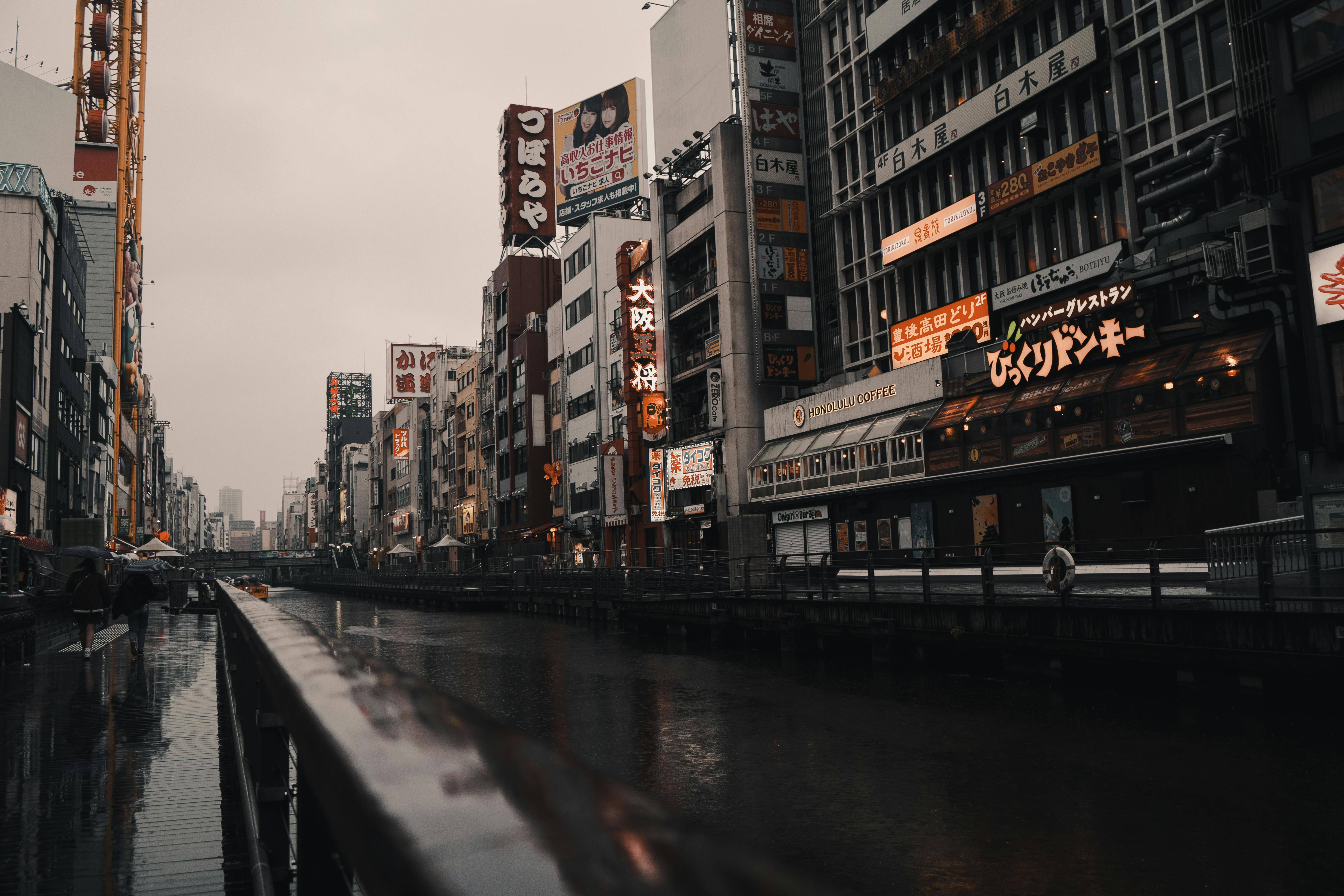
Each neighborhood in Kyoto offers its own distinct slice of the city’s rich culture and history, so exploring them is a must on any Kyoto Japan travel guide. From buzzing centers to peaceful traditional quarters, these districts serve up a mix of iconic sights and authentic local life.
Central Kyoto & Downtown form the city’s energetic core, combining historic landmarks like Nijō Castle and Kyoto Imperial Palace with modern shopping streets such as Teramachi-dōri and the famous Nishiki Market. This area is great if you want convenience and a good mix of culture, dining, and nightlife.
Gion is Kyoto’s famous geisha district, known for its traditional wooden machiya houses and charming streets like Hanami-koji. Besides spotting geisha or maiko, visitors can dine in upscale restaurants and stroll along the scenic Kamo River. It’s also close to Higashiyama, making it easy to reach other historic sites filled with culture.
Higashiyama preserves one of Kyoto’s most beautiful historic atmospheres. Its cobblestone streets like Ninen-zaka and Sannen-zaka lead you to Kiyomizu-dera Temple and a host of artisan shops, teahouses, and craft boutiques. It’s perfect for immersing yourself in traditional Japanese architecture and culture.
Shimogyō-ku surrounds Kyoto Station, offering a practical base. It blends modern city life with cultural spots like Kyoto Tower and Tō-ji Temple, and has excellent transit connections to explore both Kyoto and neighboring areas.
Kamigyō Ward has a peaceful, historical charm with quiet residential streets, several Shinto shrines, and the grand Kyoto Imperial Palace with its expansive gardens. It’s a calm neighborhood for travelers wanting a more traditional and less touristy vibe.
Arashiyama, on Kyoto’s west side, is known for its natural beauty and calm. The famous Bamboo Grove and lovely river views attract visitors looking for a nature-filled experience alongside cultural sites like Tenryū-ji Temple and Togetsukyo Bridge.
Fushimi lies a bit further out but is a must-see for its cultural importance. It’s famous for sake breweries and the iconic Fushimi Inari Shrine with thousands of bright red torii gates. The area offers a unique blend of spirituality and traditional crafts that’s a perfect complement to Kyoto’s core.
| District/Neighborhood | Key Features | Highlights |
|---|---|---|
| Central Kyoto | Commercial hub, historic landmarks, shopping destinations | Nijō Castle, Imperial Palace, Nishiki Market |
| Gion | Geisha culture, historic streets, upscale dining | Hanami-koji Street, Kamo River, traditional teahouses |
| Higashiyama | Historic preservation, artisan shops, traditional temples | Kiyomizu-dera, Ninen-zaka, Sannen-zaka |
| Shimogyō-ku | Modern facilities, transit hub | Kyoto Tower, Tō-ji Temple, Kyoto Station |
| Kamigyō Ward | Residential charm, historic sites | Kyoto Imperial Palace, Shinto shrines |
| Arashiyama | Natural beauty, tranquil temples | Bamboo Grove, riverside parks, Tenryū-ji Temple |
| Fushimi | Sake breweries, iconic shrine | Fushimi Inari Shrine, sake district tours |
Walking is one of the best ways to explore Kyoto’s neighborhoods. Thanks to the city’s grid layout and short distances between areas, you can easily move from the lively modern streets to the peaceful historic quarters. This pace helps you connect with Kyoto’s special mix of tradition and innovation, making your cultural journey all the richer.
Top Attractions in Kyoto: Temples, Shrines & Gardens
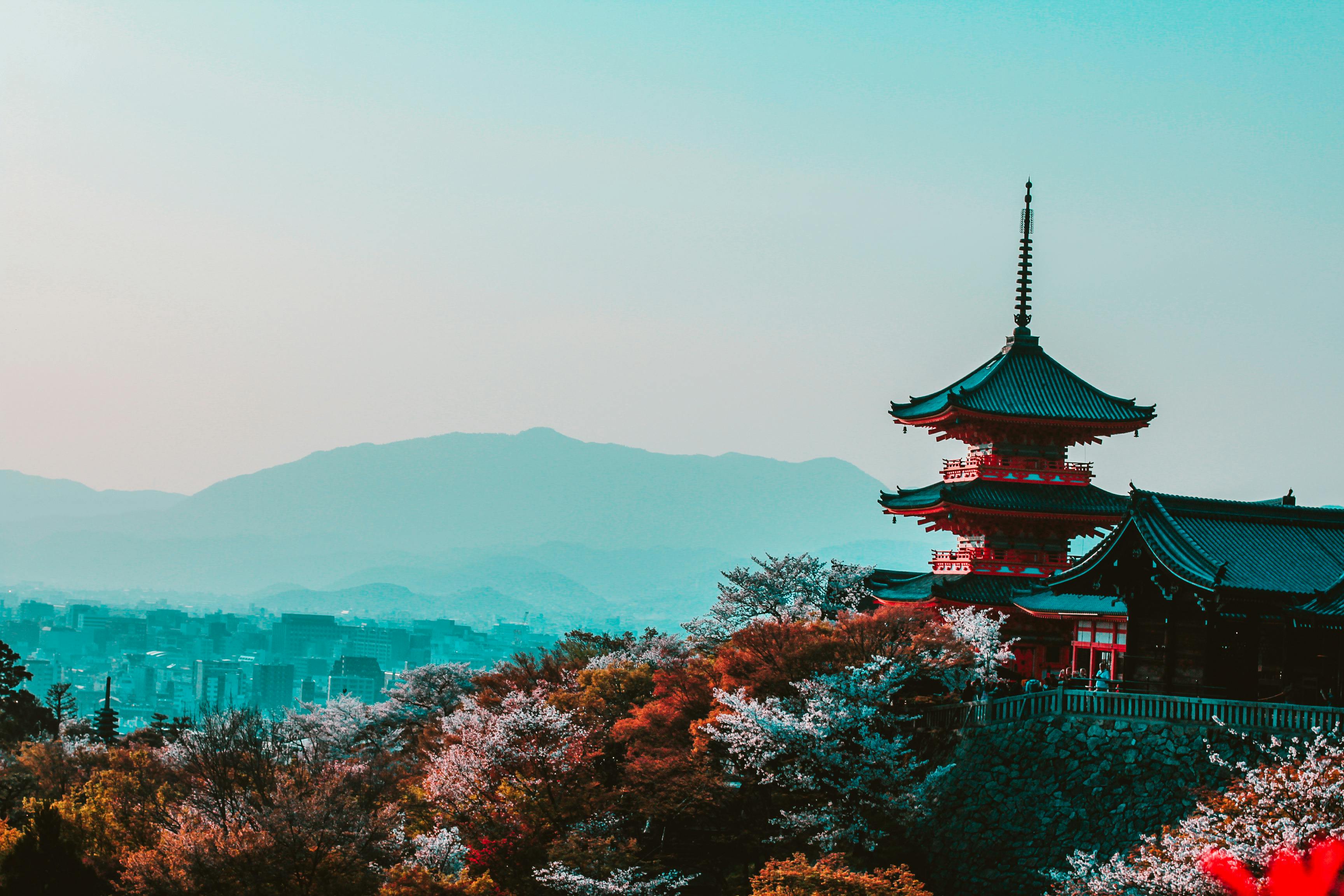
Kyoto is packed with world-famous temples, shrines, and gardens that showcase Japan’s rich spiritual and cultural roots. If you’re following a Kyoto Japan travel guide, these iconic sites should definitely be on your must-see list.
Kinkaku-ji, or the Golden Pavilion, is Kyoto’s standout temple. Its top two floors are covered in gold leaf, shimmering brilliantly over the tranquil pond it sits beside. This UNESCO World Heritage Site offers amazing photo ops and peaceful gardens that are perfect for quiet reflection and strolls.
- Fushimi Inari Taisha is famous for its thousands of vivid red torii gates that create winding tunnels up Mount Inari. Dedicated to the Shinto god of rice and prosperity, the shrine provides a memorable spiritual vibe and fantastic photos—especially early morning or late evening when it’s less crowded.
- Kiyomizu-dera boasts a huge wooden stage that juts out over a hillside, giving panoramic views of Kyoto and the changing seasons. It’s also known for the Otowa Waterfall, where visitors sip sacred water thought to bring health and success.
- Ginkaku-ji, the Silver Pavilion, enchants with subtle Zen gardens and mossy landscapes. Its elegant stroll garden features the “Sea of Silver Sand,” a carefully raked gravel area shaped into concentric waves symbolizing water.
- Ryoan-ji shows off Japan’s most famous Zen rock garden—a minimalist masterpiece with fifteen stones arranged atop raked gravel, perfect for meditation and contemplation.
Along with temples and shrines, Kyoto’s gardens are traditional landscaping masterpieces. The Arashiyama Bamboo Grove offers a surreal walk through towering bamboo stalks, best visited early in the morning to enjoy peacefulness away from crowds.
- Saiho-ji (Moss Temple) features over 120 types of lush moss covering its gardens and a heart-shaped pond. Due to the delicate environment, you’ll need to book ahead, but the tranquil moss carpet is truly special.
- Tofuku-ji Hojo Garden has four distinct Zen gardens around the old abbot’s quarters, blending walking and dry gardens ideal for enjoying seasonal changes and reflection.
- Heian Shrine Gardens, behind the shrine, boast spacious landscaped areas with cherry blossoms in spring and vibrant colors in fall, showing Kyoto’s natural beauty at its best.
These temples, shrines, and gardens perfectly showcase Kyoto’s balance of sacred architecture, natural beauty, and seasonal wonder. Including them will add meaningful, tranquil moments to your Kyoto travel guide trip alongside iconic landmarks.
Immersive Traditional Cultural Experiences

Kyoto offers more than sightseeing—it lets you dive deep into traditional culture and really connect with Japan’s heritage. Trying an authentic tea ceremony is a top highlight. Places like MAIKOYA host award-winning ceremonies in historic machiya townhouses, where you can learn the elegant art of making and serving matcha, often while wearing a kimono to boost the authentic feel.
Exploring historic geisha districts—especially Gion—is another unforgettable way to experience Kyoto’s living traditions. Wander lantern-lit streets where you might spot a maiko (apprentice geisha) on her way to a performance. Some venues offer geisha shows featuring traditional music, dance, and storytelling. You can also join interactive tours or cultural dinners to meet geisha or maiko and learn about their craft and customs firsthand.
- Authentic Tea Ceremony: Experience ritual matcha tea service at cultural centers or traditional tea houses, often bundled with kimono rentals for full immersion.
- Geisha District Exploration: Roam Gion’s atmospheric streets, watch captivating geisha performances, or join cultural dinners that deepen your understanding of this unique tradition.
- Cultural Performances & Workshops: Enjoy shows at places like Gion Corner and try hands-on workshops in crafts, calligraphy, or tea ceremony basics.
- Seasonal Festivals: Dive into events such as the Miyako Odori geisha dance in spring, the lively Gion Matsuri parade in summer, or the Aoi Matsuri procession dressed in ancient Heian costumes.
Seasonal festivals give you a vivid peek into Kyoto’s vibrant culture. The Miyako Odori dance in April features elegant performances by geisha and maiko. The July Gion Matsuri is famous for its grand parades and lively streets. Meanwhile, the May Aoi Matsuri shows off a stunning procession dressed in traditional Heian-era clothes. These events bring Kyoto’s historic culture to life with color, music, and energy.
So whether it’s tea ceremonies, geisha quarter strolls, traditional performances, or spirited festivals, Kyoto’s cultural activities leave a lasting impression. They offer genuine insight into Japan’s timeless customs, making your visit to this amazing city richer and more personal.
Day Trips and Nearby Destinations
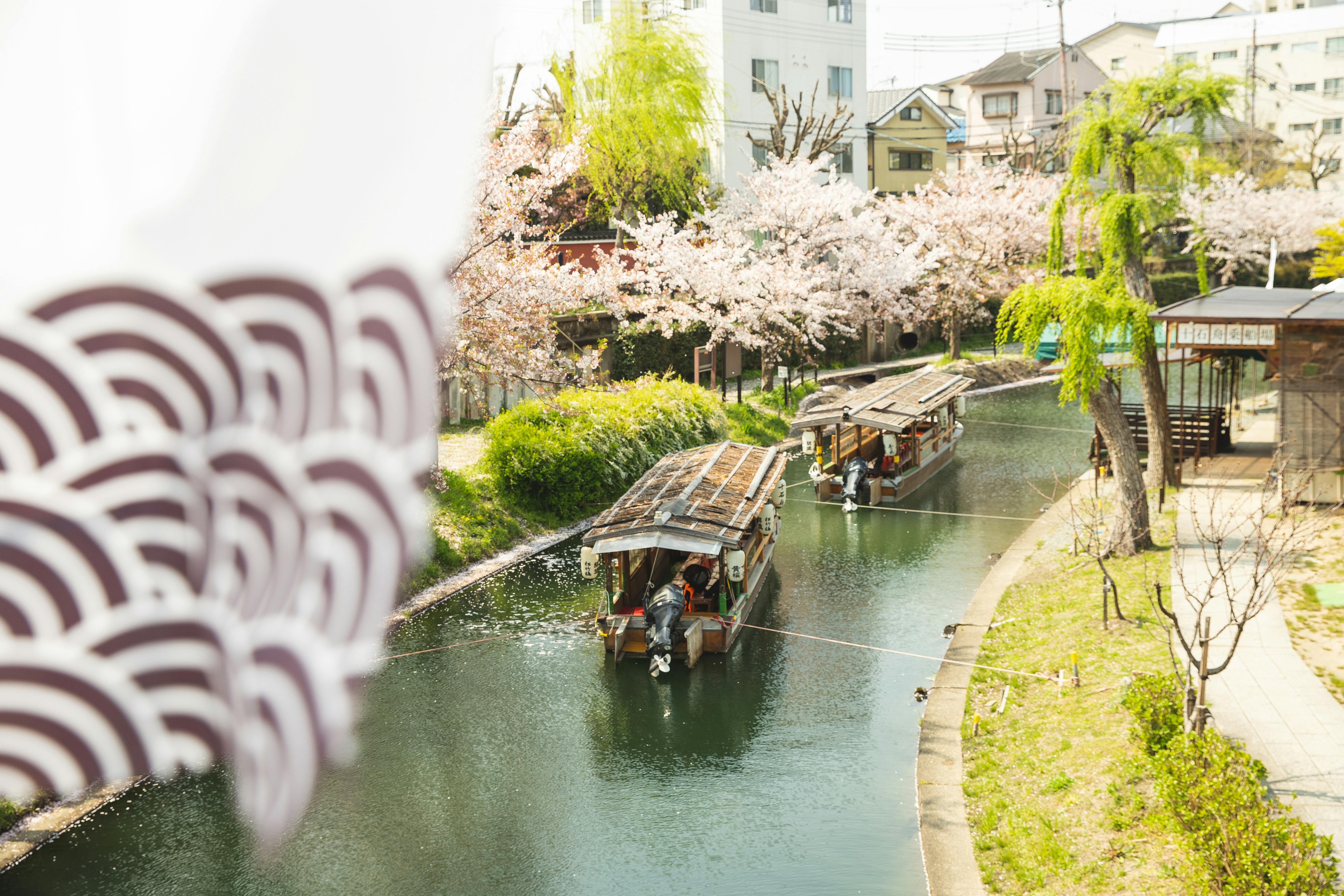
Kyoto is a perfect base for day trips, offering a mix of history, nature, and culture just outside the city. Many travelers use Kyoto as home base to visit charming towns, ancient temples, and scenic spots within easy reach.
The popular choice is Nara, less than an hour by train. Famous for friendly deer in Nara Park, it’s home to the massive Todai-ji Temple with its giant bronze Buddha, and the peaceful Kasuga Taisha Shrine lined with thousands of stone lanterns. Nara’s historic vibe complements Kyoto’s attractions beautifully.
Lake Biwa, Japan’s largest freshwater lake, is only about 10 minutes away by train to Otsu Station. Visitors enjoy cycling along scenic shores, boat cruises, and stunning views from Biwako Terrace, accessed by ropeway. Nearby, Enryaku-ji Temple on Mount Hiei offers spiritual and historical depth, while the iconic Shirahige Shrine’s torii gate standing in the water makes for striking photos.
Uji is a short trip well worth it for tea lovers and culture seekers. Famous for premium matcha green tea, Uji has traditional tea houses offering tastings and workshops. Byodoin Temple, pictured on Japan’s 10-yen coin and a UNESCO World Heritage Site, showcases stunning architecture and gardens.
- Short hikes near Kyoto: If you want to stretch your legs without going far, try the Mt. Daimonji-yama hike starting from Ginkaku-ji Temple. It takes about an hour round-trip and gives panoramic city and mountain views.
- Another scenic walk runs from Chion-in Temple to the Shogunzuka viewpoint—an easy two-hour trek with amazing views over Kyoto’s historic districts.
While longer trips like the Kumano Kodo pilgrimage trail or the rural Tango Peninsula require overnight stays, classic day trips to Nara, Lake Biwa, and Uji add natural beauty, culture, and traditional experiences within easy reach, enriching any Kyoto travel itinerary.
These nearby spots are easy to get to by train, bus, or bike rentals, offering refreshing breaks from Kyoto’s busy streets. Planning a few well-chosen day trips alongside temple visits broadens your appreciation of the region and makes your trip more memorable and diverse.
Where to Eat and Drink in Kyoto

Kyoto’s dining scene is a fantastic blend of traditional Japanese flavors, casual local joints, and cool contemporary spots. To taste authentic Kyoto food, start with classics like kaiseki (multi-course meals), tempura, yudofu (tofu hot pot), and seasonal specialties showcasing the city’s culinary heritage.
For a lively market vibe, Nishiki Market is a must-visit. Stretching over five blocks with more than 100 shops, you can sample fresh produce, pickled veggies, grilled seafood, and street foods like yakitori and mochi. It’s perfect for nibbling diverse bites while strolling through the city.
- Mishima Tei: A historic spot famous for sukiyaki, where fresh meat and veggies simmer in a savory broth; dipping cooked pieces into raw egg is a delicious traditional touch.
- Ichinoden: Specializes in dishes with Saikyo miso, like their signature black cod, highlighting Kyoto’s delicate and elegant flavors.
- Monk: Near the Philosopher’s Path, known for wood-fired sourdough pizzas made with seasonal local ingredients, blending Japanese and Western tastes.
- Pizzeria MAMA: A cozy Arashiyama place offering Italian-Japanese fusion pizzas paired with a well-curated wine list.
- Ashioto: A modern izakaya serving creative and tasty small plates that spotlight Kyoto’s best seasonal produce.
- Taiho: An innovative spot offering natural wines paired with inventive Chinese-Japanese fusion dishes, all served in a relaxed atmosphere that foodies will love.
Cafés like Café Momoharu are great for breakfast, serving fluffy French toast and egg sandwiches (egg sando), all perfectly matched with house-roasted coffee. For nightlife, Wadachi in Gion is a cozy sake bar with a wide sake selection and tasty bar snacks like deep-fried oysters.
If you want something lively and a bit quirky, check out Tonkatsu Shimizu, known for its giant pork tonkatsu sandwich, cold beers, and fun vibe (cash only, with a cover charge). Near the Kamogawa River, the stylish Atlantis Bar serves excellent cocktails—an ideal spot to cap off a Kyoto evening.
Sample Itineraries for Kyoto Visitors

Kyoto perfectly blends iconic cultural sites with tranquil nature, making it an ideal spot for sightseeing and deeper cultural trips. Here are some sample itineraries to help you explore Kyoto whether you have a single day or a few days to soak up its heritage.
One-Day Itinerary for Highlights
Start early at Fushimi Inari Shrine, famous for its thousands of vibrant red torii gates creating a mesmerizing mountain path. After a morning hike, head to the peaceful Arashiyama Bamboo Grove for a quiet walk amid towering bamboo. Enjoy lunch riverside in Arashiyama before visiting the shimmering Kinkaku-ji (Golden Pavilion), where its golden exterior reflects perfectly in the pond. End your day with a relaxed stroll through the historic Gion District, where you might spot geisha heading to their evening appointments. This plan balances iconic sights with an easy pace.
Three-Day Itinerary for Deep Cultural Exploration
Day 1: Begin with Fushimi Inari Shrine, then spend your afternoon exploring the atmospheric Higashiyama District, wandering streets filled with artisan shops and classic teahouses. Wrap up with a twilight walk through Gion’s geisha district.Day 2: Start with Arashiyama Bamboo Grove and visit nearby Tenryu-ji Temple, a UNESCO World Heritage site with beautiful gardens. In the afternoon, explore the historic Nijo Castle and enjoy a kaiseki dinner near Nishiki Market.Day 3: Visit Kinkaku-ji (Golden Pavilion) early to avoid crowds, then walk the scenic Philosopher’s Path, stopping at temples like Ginkaku-ji. Spend your afternoon at Kiyomizu-dera Temple, famous for its wooden veranda overlooking the city. For dinner, head to the historic streets of Sannenzaka and Ninenzaka for traditional food in a charming atmosphere.
- Tip: Customize your trip to match your interests—add cultural workshops, tea ceremonies, or matcha tastings for richer experiences.
- Travel smart: Use Kyoto’s efficient bus and subway system to save time and avoid long walks.
- Hidden gem: Save some time for an evening stroll along the Philosopher’s Path or a visit to Maruyama Park during cherry blossom season for magical moments that many visitors miss.
Insider Tips and Practical Advice for Travelers

If you’re visiting Kyoto, here are some handy insider tips to make your trip smooth and culturally fulfilling. Aim for at least 2 to 3 days to cover major temples like Kinkaku-ji and Fushimi Inari Shrine, and to enjoy traditional cultural activities. If you have time, consider extending your stay to explore quieter neighborhoods and hidden gems off the beaten path.
Start your days early—especially at popular attractions like the Arashiyama Bamboo Grove—to dodge the crowds. Remember, many temples close on Mondays, so plan your schedule to get the most out of your visit. Booking accommodation early, particularly if you want to stay in traditional ryokans, is important for busy seasons like cherry blossom or autumn foliage times.
- Transportation: Use prepaid IC cards like ICOCA or Suica for easy travel on buses and trains. Download offline maps since mobile signals can be spotty near temples or rural spots. If you’re planning day trips outside Kyoto, the JR Rail Pass is cost-effective.
- Local Etiquette: Be respectful—keep noise low in temples, remove your shoes when asked, and dress modestly when visiting sacred places.
- Language and Money: English signs are common, but learning a few simple Japanese phrases enhances interactions. Convenience stores are great for ATM access, snacks, and essentials.
- Beat the Crowds: Visit sights early in the morning or late afternoon. Explore hidden temples like Ōtagi Nenbutsu-ji and the moss garden at Saihō-ji for peaceful experiences.
Taxis offer flexible rides and often drivers know great routes or spots to recommend—especially handy if you want to cover more ground like Gion and Higashiyama quickly in one day. And don’t hesitate to try immersive cultural activities like tea ceremonies or even ninja workshops—these are fun, interactive ways to dive deep into Kyoto’s fascinating heritage.
Wrapping Up
This Kyoto Japan travel guide has shown you the city’s amazing mix of historic temples, vibrant neighborhoods, seasonal beauty, and authentic cultural experiences. From must-see landmarks like Kinkaku-ji and Fushimi Inari Shrine to immersive activities such as tea ceremonies and geisha district strolls, Kyoto offers endless ways to connect with Japan’s timeless traditions. Practical tips on transport, lodging, dining, and day trips help make your visit smooth and enjoyable.
Looking ahead, Kyoto continues to blend its treasured customs with modern hospitality and tech, making visits even better while preserving its cultural soul. Whether you’re planning a quick sightseeing stop or a deep cultural dive, embracing Kyoto’s unique charm and rich heritage will create memories that stay with you long after your trip wraps up. So, start planning your adventure today and let Kyoto’s timeless beauty inspire and deepen your understanding of Japan’s ancient capital and its enduring spirit.
- Key Takeaways
- Introduction to Kyoto and Its Cultural Significance
- Why Visit Kyoto?
- Best Time to Visit Kyoto
- How to Get to Kyoto
- Getting Around Kyoto: Transportation Guide
- Where to Stay in Kyoto
- Exploring Kyoto's Neighborhoods and Districts
- Top Attractions in Kyoto: Temples, Shrines & Gardens
- Immersive Traditional Cultural Experiences
- Day Trips and Nearby Destinations
- Where to Eat and Drink in Kyoto
- Sample Itineraries for Kyoto Visitors
- Insider Tips and Practical Advice for Travelers
- Wrapping Up
Get your FREE Monstera Art download
Join our WanderLife Studios mailing list to get updates about our work and be the first to know about upcoming art products.
As a Thank You Gift, you will get this wonderful hand-drawn Monstera Line Art as a digital download for FREE .
